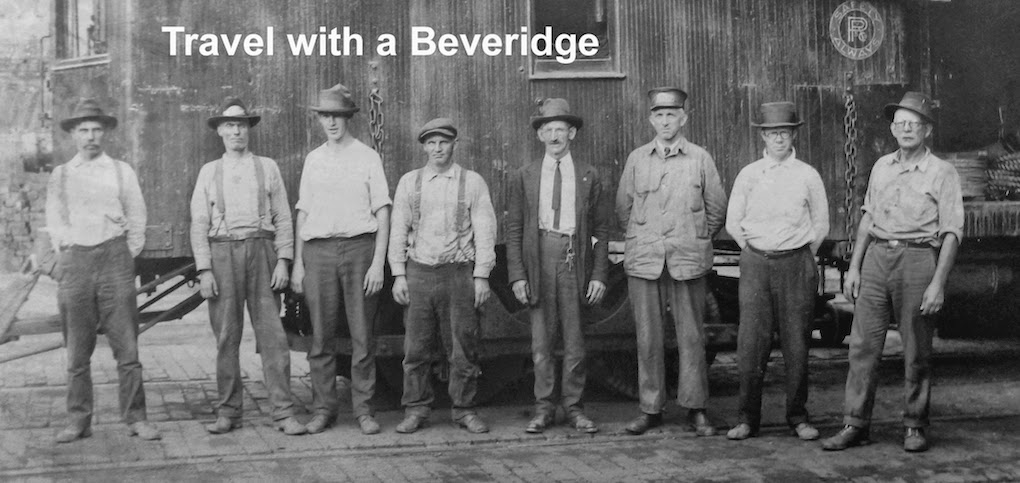
Part II: Yellow smoke and big money
Few could believe their eyes at how fast Donora was growing to life beside a giant steel mill under construction in 1901 on what had been rolling hills dotted with farms.
Yet businessmen as well as the folks who worked that soil for more than a century looked on with some doubts about the mill’s promise of thousands of new jobs and prosperity. They lost the bet.
The “wheels were turning in the rod mill” for the first time at noon Aug. 9, 1901, the local newspaper,
Donora American, announced.
“Almost every one of the local officials has lost a suit of clothes or two or wages as to the starting of the works.”
The new Union Steel Co. mill soon outpaced projections that it would produce a million kegs of nails and 200,000 tons each of rods and wire within a year.
Developer Frank Donner and partner Henry Clay Frick further proved themselves to have been an industrial powerhouse when their company absorbed Sharon Steel Corp. in November 1902, earning them $50 million in combined assets. Union Steel then had the capacity to produce 850,000 tons of steel by controlling 6,000 acres of coal reserves in the region.
But a month later, U.S. Steel reacted by purchasing Union Steel for $45 million, solidifying the world’s then largest manufacturing corporation, and Donner turned his attention to philanthropy.
U.S. Steel was putting a lid on a major competitor, and in return, it took possession of Donner’s valuable ore field. The Donora mill would become known as American Steel & Wire Corp.
By August 1902, there were 5,082 people living in the crowded new town, and it was hard-pressed to keep pace with the growth.
Newcomers eager for jobs faced severe housing shortages. Real estate with a combined value of $75,000 was sold that year in another rush for land.
Meanwhile, the first billets of steel were produced in an expansion three years later at Margaret Furnace, the second $2-million new blast furnace to go up in town.
Immigrants needed to be strong to survive Donora. Many of them worked a second job to build a family home after toiling long hours under the smokestacks, according to modern scientist and environmental author
Devra Davis.
A typical laborer dug his home’s basement and lined its floor with concrete while his family lived in the foundation until he could afford to build additional floors, the Donora native stated in her 2002 book on air pollution,
“When Smoke Ran Like Water.”“Those who made it to the elite rank of machinist, master molder or welder could build three stories, enough for their kids, their parents, their grandparents and usually some newly arrived cousins from Central Europe,” Davis wrote.
That room-and-board problem turned into a housing famine in 1915, after U.S. Steel announced it was building a $3 million zinc mill at the northern end of town.
The local newspaper reacted by pleading in a headline: “Have You Rooms to Rent?”
Local health officials were even concerned about the spread of disease with as many as three families sharing cramped quarters alongside borders.
The zinc mill was going to become the largest and most modern such plant in the world, and employ 2,100 workers. The resulting housing crunch became so serious that some men were quitting their jobs and leaving town because they could not find a bed. The borough’s population soon swelled to its peak of nearly 15,000 residents.
Like neighboring Monessen, Donora was populated mostly by Italians and Slavs. Donora also was home to many immigrants from Poland, Croatia, Hungary, Russia and Scotland.
But the work was especially tough in the zinc mill, which employed a large number of Spanish immigrants because they had shown greater tolerance to the extreme heat at other zinc smelters in the United States.
While laborers spent between eight and 12 hours a day in the steel plant, the workers who turned out zinc could withstand just three hours a day beside the smelters. The temperatures there hovered around 120 degrees, and the men had to take turns lifting 60-pound ingots in order to keep their jobs.
“It was really backbreaking work in intolerable heat,” Davis said, while speaking in Donora in April 2004.
Former Donora resident Betty Dickie said her husband, Robert, went through clothes almost overnight when he worked next to the smelters in the 1950s. She said the acid there made his work clothes fall apart so quickly that they never lasted long enough to be washed.
The zinc plant’s chief byproduct was sulfuric acid to craft wartime explosives and to pickle steel, a chemical process that removed impurities during steel production. In addition to zinc, the zinc site also processed cadmium and lead exclusively for corporate interests. That reportedly included the turnout of “top-secret” alloys strong enough to bulletproof U.S. Army tanks during World War II.
While the zinc mill brought new, pungent yellow clouds of smoke to that end of Donora, few people seemed to care as long as money was rolling in and winds tended to carry the smoke off to the east.
Click
here to return to Part I, A borough rises from hell's bottoms.
Click
here to read Part III, The mill is sued over sickening air.
(Caption: The office of Real Estate Broker G. L. Neel promised results after people flocked by the thousands to Donora only to face a housing crisis during the early 20th Century. Post card courtesy of Casey Perrotta)



















